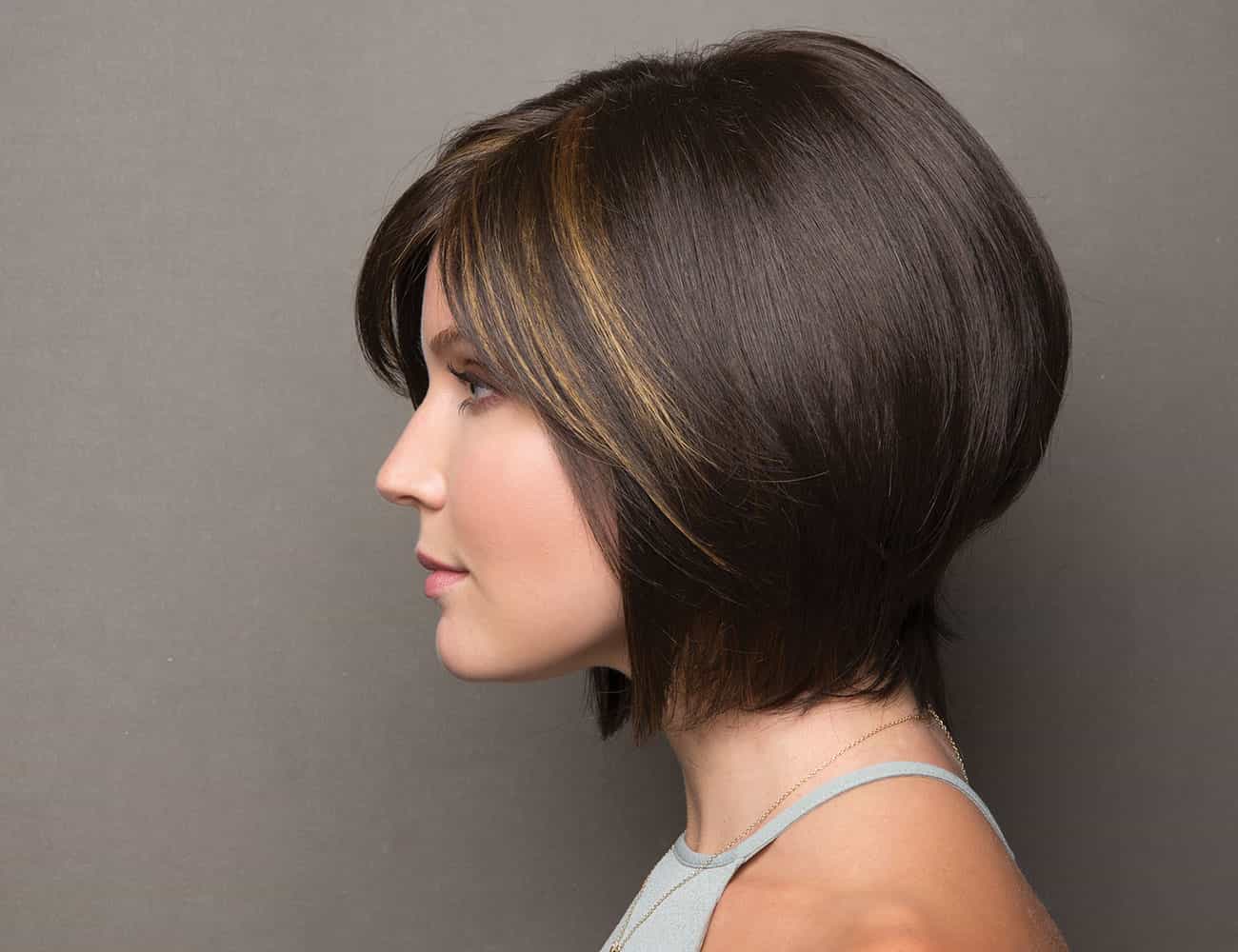The two important rules for putting on your wig correctly are to position the wig line at the front, 4 fingers width from your brow bone and to ensure the ear tabs on each side of the wig are evenly positioned to sit in front of your ears and bent into your temples so the wig is straight. Hairpieces require a little practice. Our experienced staff are more than happy to spend some time with you and advise how to do this.

Wig Base Types
Basically there are three types of wig bases or caps. The cap can be machine made, hand made or a combination of both.

Machine made wig bases or caps
Combination wig bases


Hand tied wigs
Wig Types
Modacrylic Fibre Wigs


Human hair wigs
Wigs made from human hair are made with two types of hair, European hair and processed hair.
Processed hair is hair derived from China or India, which has been refined and the outside layer of the hair (cuticle) removed. This process stops the hair from tangling. The hair is then heavily colour treated affording a wide variety of shades from blonde to black. All hair wigs fade over time however. Wigs made from processed hair are less expensive than wigs made from European hair.
There are a limited amount of ready-to-wear processed real hair wigs, normally on nylon monofilament top bases.
Scalp Moulds for Wig bases
Each type of wig and base can be made in a partial form when a full wig is not necessary. When a cast or template is called for then specialist skills are required. It can also take 8-14 weeks to make!

Frequently Asked Questions
Frequently Asked Questions
Will my wig stay on?
There are various ways a wig can be secured onto the head. The most common method is a tightening at the nape with elastic adjusters which is built into the wig. This can be easily tightened or loosened by you according to the size of your head and holds the wig firmly in place.
If your wig is covering hair then you may be advised to wear a wig cap which will cover your natural hair and allow a wig to be held in place without slipping.
A wig cap may also add an extra element of comfort when wearing the wig, clients wearing wefted (machine made) wigs often ask for this. Some wigs have areas where you can apply wig tape that will make you feel more secure when wearing your wig too but it’s not recommended if undergoing chemotherapy treatment as your skin may be more fragile.
Don’t worry about your wig falling off, wig manufacturers understand that you want the wig to stay firmly on your head and design them with maximum staying power. A good wig supplier (such as ourselves) will be able to help you fit the wig properly and securely.
How long will my wig last?
A lot will depend on the environment that you wear it in. As a general rule of thumb, with the piece being worn on a regular basis and the maintenance being correctly applied – then you can expect:
Fibre wigs and hairpieces: This type of wig can last from 4 months to 9 months
depending on various factors such as hair length, quality and maintenance.
Human Hair wigs and hairpieces: This type of wig can last for up to 1 year or even longer – depending on various factors such as quality, construction and maintenance.
Will wearing a wig prevent my hair from growing back?
No, a wig will not prevent your hair from growing back.
Bases which use a vacuum to grip to your head such as supplex or demalite wigs should be used on clients with very sparse or no hair. If there’s chance of hair returning these are not recommended.
Can I sleep in hairpiece/wig?
This not recommended, it will cut the lifespan of the wig/hairpiece in half. However, we understand this is not always possible so if you do, sleeping on a silk pillow is advised.

